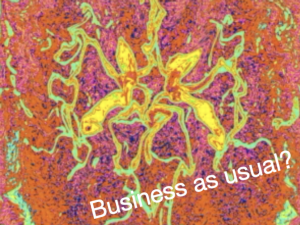The Radiology in modern economics – business as usual?
DOI:
https://doi.org/10.59667/sjoranm.v2i.11Keywords:
financial crisis, demedicalization, reimbursement of radiology, health care, centrality in patient careAbstract
Until now the authors could identify three components to be critical to a well-functioning radiology system:
- The radiological self-perception and perception by others as a discipline.
- The radiologist as a human being.
- Depending on where the respective radiology department is located, the financial resources of radiology are very variable.
It is consensus in the medical community that radiologists play a key role in the diagnosis, treatment, and protection of patients [1]. In the past, various societal changes have led to a decline of reimbursement for radiological procedures and reductions in the quantity and quality of output. So-called demedicalization trends in radiology departments are taking place [2]. To make radiology fit for survival, several measures and strategy changes should be observed in the future. As we have learned from the various financial crises over the past 30 years, most western economies are driven primarily by profit maximization and ultra-rapid return on investment, leading to major inequalities in the distribution of wealth and health in society [3]. Will this be still acceptable in the future? Can radiology continue as it has been over the last decades? Business as usual? Will there be a significant financial deterioration in health system resources in the future, that will impact radiology negatively? To attempt to answer these questions, possible strategies for the survival of radiology as an independent discipline are discussed.
References
European Society of, R., The role of radiologist in the changing world of healthcare: a White Paper of the European Society of Radiology (ESR). Insights Imaging, 2022. 13(1): p. 100.
European Society of, R., The consequences of the economic crisis in radiology. Insights Imaging, 2015. 6(6): p. 573-7.
Stuckler, D., et al., The health implications of financial crisis: a review of the evidence. Ulster Med J, 2009. 78(3): p. 142-5.
Bosbach, W.A., et al., Ability of ChatGPT to generate competent radiology reports for distal radius fracture by use of RSNA template items and integrated AO classifier. Current Problems in Diagnostic Radiology, 2023.
Meyl, T.P., et al., Software-Based Evaluation of Optimization Potential for Clinical MRI Scanners in Radiology. Rofo, 2022. 194(4): p. 391-399.
Breeze, P.R., et al., Guidance on the use of complex systems models for economic evaluations of public health interventions. Health Econ, 2023.
Karanikolos, M., et al., Financial crisis, austerity, and health in Europe. Lancet, 2013. 381(9874): p. 1323-31.
World Health, O., Framework for countries to achieve an integrated continuum of long-term care. 2021, Geneva: World Health Organization.
Kolasa, K., et al., Do We Need Another CT Scanner?-The Pilot Study of the Adoption of an Evolutionary Algorithm to Investment Decision Making in Healthcare. Tomography, 2023. 9(2): p. 776-789.
Hilabi, B.S., S.A. Alghamdi, and M. Almanaa, Impact of Magnetic Resonance Imaging on Healthcare in Low- and Middle-Income Countries. Cureus, 2023. 15(4): p. e37698.
Menzies, N.A., et al., Bayesian Methods for Calibrating Health Policy Models: A Tutorial. Pharmacoeconomics, 2017. 35(6): p. 613-624.

Downloads
Published
Issue
Section
License
Copyright (c) 2023 Frank Mosler

This work is licensed under a Creative Commons Attribution 4.0 International License.
This license requires that reusers give credit to the creator. It allows reusers to distribute, remix, adapt, and build upon the material in any medium or format, even for commercial purposes.








